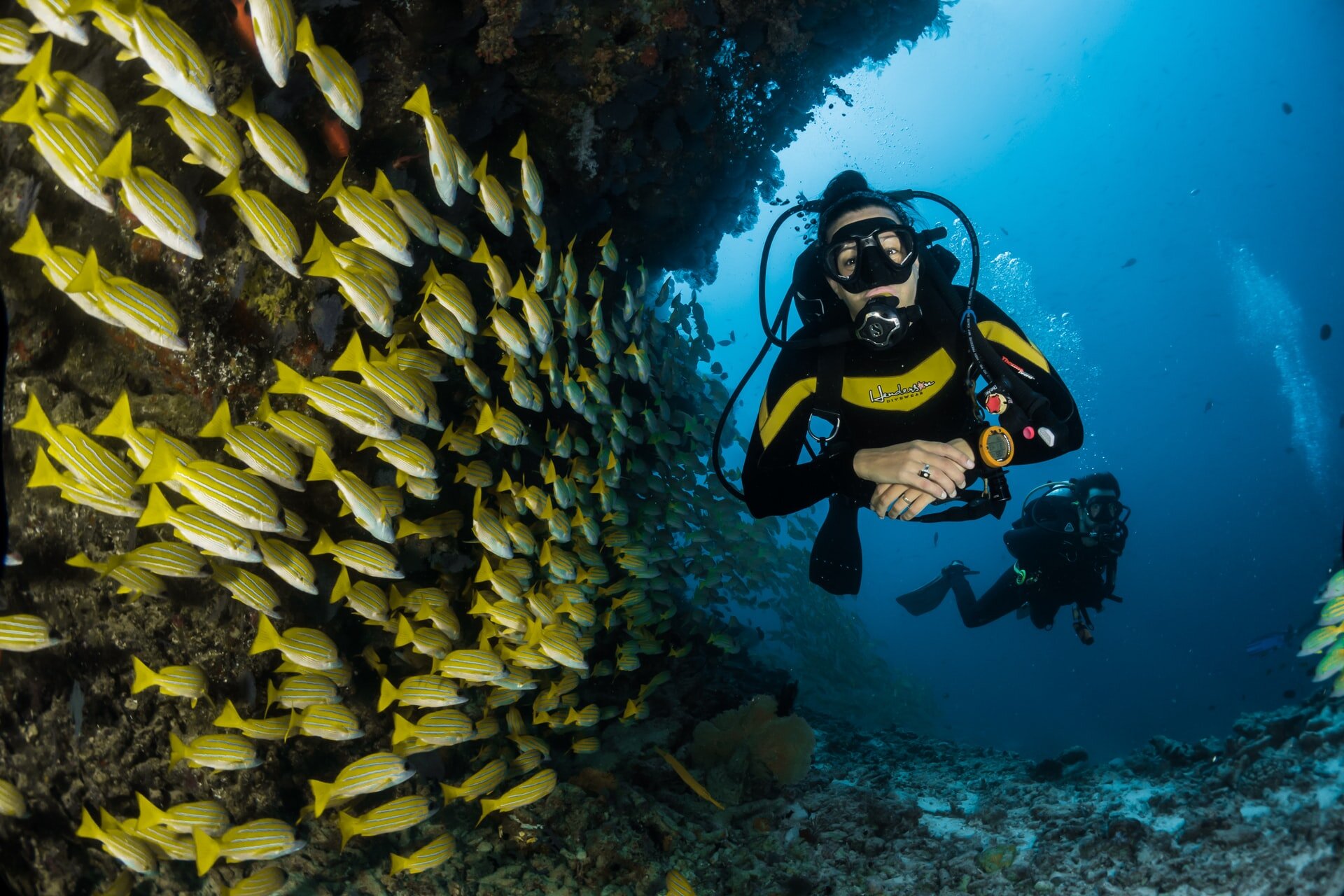5 of the world’s best reef diving destinations
/A diver seeing incredible marine life at a reef in the Maldives.
2018 marked the third International Year of the Reef, following on from events in 1997 and 2008. The International Year of the Reef aims to strengthen awareness globally about the value of, and threats to, coral reefs and their associated ecosystems, as well as implementing effective conservation techniques and spreading information concerning coral reef management.
Some of the world’s Coral Reefs are also huge attractions for tourists, whether it’s seeing it through a glass-bottomed boat, from the air or getting up-close and personal on a diving holiday. If you like to wetsuit up and see what the deep blue oceans have to offer, here are five of the world’s best reefs for diving.
Great Barrier Reef, Australia
An aerial view of the Great Barrier Reef.
The world’s largest coral reef system, the Great Barrier Reef sits off the coast of northeast Australia and is comprised of over 2,900 individual reefs and 900 islands stretching over 2,300 kilometres.
Rich in colour, marine life and corals, the Great Barrier Reef has a wide range of dive sites suitable for all abilities – from shallow spots around the islands which are perfect for first-timers to the outer reefs which are deeper and are better suited to those with experience.
The Bight Reef, Turks and Caicos
The Turks and Caicos Islands are home to one of the longest barrier reefs in the world. At over 125 miles long, it protects the north shore of Providenciales island and provides an ideal spot from which to observe humpback whales.
With underwater visibility extending 100 feet below the surface, the coral reefs, seamounts and sea walls that surround the islands are perfect for encountering schools of tropical fish, sea turtles and eagle rays.
Belize Barrier Reef, Belize
Belize’s stunning Great Blue Hole, as seen from the air.
Known more for the Great Blue Hole – a giant marine sinkhole first explored by Jacques Cousteau – than the coral reef itself, the Belize Barrier Reef is a world-class destination for recreational scuba divers, offering the opportunity to dive in crystal-clear waters and see a variety of tropical fish and colourful coral formations.
It is possible to dive into the hole itself, although it requires a certain level of experience and responsibility. This otherworldly experience isn’t a typical reef dive, but you’ll get to marvel at limestone formations, stalactites hanging from the cavern ceiling and maybe even be able to enjoy the company of hammerhead and bull sharks. For those looking for something a little more eccentric, you can skydive into the Great Big Hole on a tour that leaves from the mainland.
The Maldives
The Maldives is more than just a place of luxury, with a multitude of diving sites on offer.
The Maldives is more than relaxing on an idyllic island in a first-class resort – it is also a fine destination for diving. While the scattered island nation does have coral reefs, it is its immense variety of marine life which sets it apart from the test.
The caves, caverns, overhangs and soft corals which dot the Maldivian area of the Indian Ocean are a magnet to marine species including Napoleon wrasse, parrotfish, snappers, fusiliers, jacks and sweetlips, while venturing further out will increase your chances of seeing manta rays and whale sharks.
Tubbataha Reef, Philippines
A protected national park and UNESCO World Heritage Site in the Phillippines, Tubbataha Reef is located in the middle of the Sulu Sea – an incredibly remote location.
Although Tubbataha is only reachable by boat in the short season of March to June, when the park is officially open, the weather is reliably clear and calm, giving you a great opportunity to dive safely and see over 1,000 species of marine animals including 350 different types of coral along with over 650 fish, cetacean and turtle species.



















Travelling alone can be both daunting and exhilarating, so, to help with your debut, here are 11 tips for your first solo travel adventure.